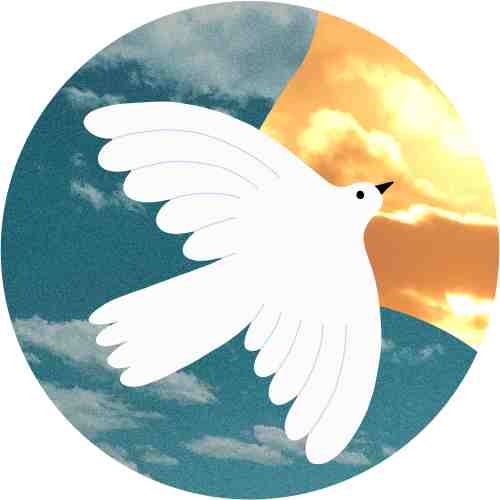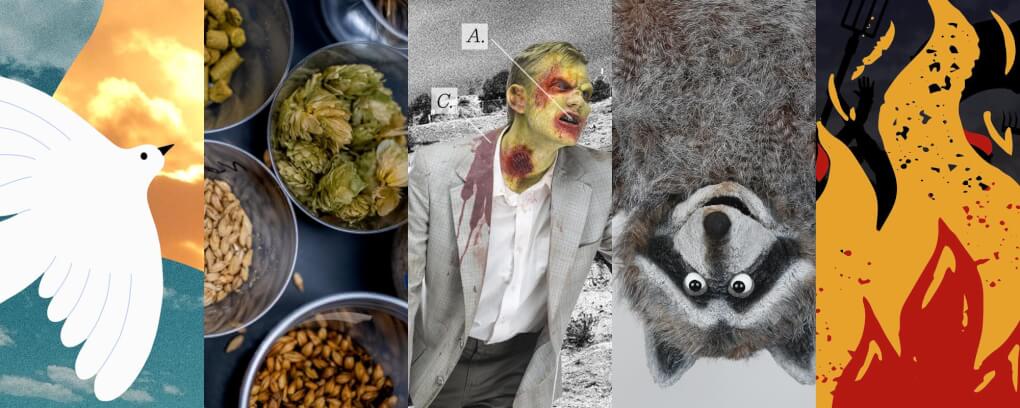
Cannabis Regulations and Tourism
Starting in the Fall semester, this course will be required for students seeking a badge in cannabis operations or the cannabis interdisciplinary certificate or minor. It is open to all students.
John Lipford, affiliate professor of hospitality and tourism management, expects cannabis tourism to become a major player in the industry over the next 10 years. "We are already seeing various offerings in Michigan and other states which combine the two," he said, referring to business models like "bud and breakfasts," culinary infusions, designated lounges for consumption and large-scale events like concerts.
Students in the class study cannabis from all lenses, he said, including its legality and implications on public health, criminal justice and regional planning.
"My hope is that students are prepared to engage in informed conversations with other people about this topic, regardless of contrasting opinions related to the historical stigma attached to cannabis," Lipford said.

SW 344: Responding to Loss, Death and Grief
Open to all students with junior standing and an elective for social work majors, also a general education health issues course.
Sally Pelon, associate professor of social work, said the course is intended to help students explore death in American culture, understand the process of dying and how to support terminally ill family members, friends or patients.
"We don't talk much as a society about this or how to navigate and process death, loss and grief," Pelon said. "I hope that this course helps students to feel comfortable thinking and talking about these important issues. I hope they leave with skills that they can use to help themselves and those they care about to better understand and cope successfully with loss and grief."
MKT 369: Creativity in a Cubicle Environment
An elective class open to anyone, although most students are business majors. The course name will shift slightly to Creativity in the Marketing Environment but maintain its core ideals: creativity, group projects, design thinking.
Paul Lane, professor of marketing, said students have enjoyed the class because they don't know what to expect next. "The goal is to open their minds and to expand their horizons with activities that challenge them," Lane said. "Creativity is like fitness. You have to exercise your creative skills as you do your muscles." He added that creativity is among the top three most sought-after abilities in the workplace, according to the World Economic Forum.
Without lectures and with very few presentations, Lane said students change project teams each week of the class to work together on activities like empathy and observation, sizing a problem, or prototyping and testing. Even the room in the L. William Seidman Center lends itself to class productivity.
"Room 2001 has different types of furniture in interesting groupings. Some are high rectangular tables, some are round tables, some are chairs with arms. First one in the room can choose their location for their team," Lane said.

Hollywood Science
Some people may remember this class offered as Zombie Physiology, a 300-level biomedical sciences course. Eric Ramsson, associate professor of biomedical sciences, made some changes to the content because, as he said, "Zombies are not in vogue anymore."
Ramsson developed that course after watching "The Walking Dead" series with his wife and continually finding flaws with the logic that zombies could live for a decade or more. "My wife pushed me to develop a course about the physiology of a zombie," he said.
In those classes, Ramsson asked students to design their own zombie by deciding on the infectious agent and inventing their own feasibility of medically related issues. Students who take "Hollywood Science" can choose to dissect any issue from a movie, TV show or book.
Ramsson said student groups have delved into the feasibility of medical emergencies on "Grey's Anatomy," how realistic gun violence is in Quentin Taratino movies, how CPR is performed on various shows, and what Captain America would look like now if he really was frozen in ice at the end of 2011's "Captain America: The First Avenger."
"The group had a life-size cardboard cutout of (actor) Chris Evans and made illustrations to show what he would really look like. He had no nose, frostbite on his hands, no toes were left. They created a medical examiner's report," Ramsson said.
By the end of the semester, Ramsson said students have improved their research skills and have a better understanding of the human body. "I give them a lot of freedom in this class and as much as it terrifies some students, most really enjoy this class," he said.

SPA 350: Spanish Laboratory Theater
This Spanish language class is better known among students as Spanish Puppet Theater. By the end of the semester, students have created their own puppet, written a script, and produced a short children's play that is performed at least twice in Spanish.
Jason Yancey, associate professor of Spanish, said most students have not even attended a play before this class, let alone designed a puppet. Yancey came to Grand Valley in 2009 with 15 years of puppeteering experience and said teaching this course is among the most rewarding accomplishments of his career.
"I'm so grateful to the university for allowing me the freedom to do this," Yancey said. "Over the years, I have received grants for lighting and sound equipment, and we're able to bring this show to area elementary schools."
Yancey's students perform their puppet shows at area Spanish immersion schools. He said this past Winter semester one of his students remembered being in the audience at Ada Vista Elementary School.
"It's quite an experience for both the Grand Valley students and the elementary students," he said. "At the end of the semester, this builds their language and confidence skills. If they can make a puppet talk in Spanish in front of 150 kids, they should have no problems conversing with someone they meet on a trip to Chile."

Marian Reid works on a team brewing project in her Foundations of Brewing class taught by Mark Staves. (Kendra Stanley-Mills)
CMB 350: Foundations Of Brewing
A general education, health issues course; prerequisite, junior standing.
When Mark Staves, professor of cell and molecular biology, started designing this course, he vacillated between having students make wine or beer. "I know a whole lot more about wine, but the timing of making batches lent itself more to beer and then we are able to discuss the whole history of beer and how important it has been to the development of civilization," he said.
Students make two batches of beer throughout the semester, with ingredients from an area brewing supplier that Staves purchases. Batches are then bottled and sampled, and changes are made for the second (and often better) batch. It's a similar process to that offered by home brewing kits, he said.
"They are also learning to taste the constituents and recognize the off-flavors," Staves said.
The consequences of alcoholism and binge drinking are discussed, Staves said he emphasizes drinking in moderation constantly throughout the semester. "I hope they become educated consumers," he said.
Past students have won brewing competitions for the beer they learned to make in Staves' class.
PLS 334 or WGS 334: Sex, Power and Politics
Open to all students with junior standing, a general education identity issues course.
This course is cross-listed in the political science and women, gender and sexuality departments. Karen Zivi, professor of political science, said current events drive some of the content but the focus is the intersection of philosophy and politics.
"It's really about the history of a set of ideas about gender and sexuality and how they seep into all parts of our lives," Zivi said. "It's everything from housing discrimination to LGBTQ+ issues in the news to sexual violence and reproductive justice."
Ground rules about class discussion are set at the beginning of the semester. Zivi said she wants students to hone their critical thinking and research skills and to also take away an awareness of intersectionality.
"I hope students have a better understanding of how racial difference, economic status, nationality and religion impact one’s experience of gender and sexuality in ways that often get obscured by policy discussions," she said.

HST 376: History of Witch Hunts
Open to all students with junior standing, a general education identity issues course.
It is not far-fetched to discuss how the Salem witch trials in the 1690s (and those in Europe in the 1450s) are relevant to today's gun violence. Grace Coolidge, professor of history, is among the faculty members who teach this popular course. Coolidge said it comes down to marginalization.
"It's a central question I ask when the semester starts," she said. "Why does a group of people think that it's OK to kill their neighbors? Then they see the correlations to violence happening today, especially in marginalized communities."
Coolidge said most students start the semester thinking this class only focuses on witch trials in Salem, Massachusetts. The course starts with the witch trials in 14th century Europe. She hopes students leave the class with improved research skills and an understanding of how historians think.
"I want students to be able to evaluate different sources by using their critical thinking skills and see how those evaluations change over time because of the ways people use evidence," Coolidge said.







